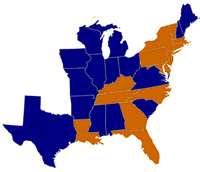Paradise in a Breakfast Bowl
Pre-processed, dry breakfast cereal was largely invented by American "food reformers" who wished to create a food that was convenient, healthy, and tasty, but who also believed that such a food would regenerate mankind. They wished to bring humans back to the original, "natural," spiritual state in which they lived in the Garden of Eden. Try to figure out, for each of the following products, if the inventor was motivated by religious ideas.
1. Graham Crackers
Yes.  Sylvester Graham (1794-1851) was the most renowned food reformer of the 19th century. He wrote The Philosophy of Sacred History Considered in Relation to Human Aliment and the Wines of Scripture. Graham was known by the nickname of "Doctor Sawdust" because of his promotion of the virtues of bread made with whole-wheat ("Graham") flour. His followers set up "Graham hotels," like small, provisional utopias, where guests following Graham's dietary regimen could board with like-minded progressive reformers.
Sylvester Graham (1794-1851) was the most renowned food reformer of the 19th century. He wrote The Philosophy of Sacred History Considered in Relation to Human Aliment and the Wines of Scripture. Graham was known by the nickname of "Doctor Sawdust" because of his promotion of the virtues of bread made with whole-wheat ("Graham") flour. His followers set up "Graham hotels," like small, provisional utopias, where guests following Graham's dietary regimen could board with like-minded progressive reformers.
Russell Thacher Trall (1812-1877) was a water-cure physician who opened the Hygieo-Therapeutic Institute in Manhattan in 1843. Trall was the creator of Graham crackers (made with Sylvester Graham's "Graham flour") sometime in the 1850s.
2. Quaker Oats
No.  Business partners Henry D. Seymour and William Heston of Ravenna, Ohio, registered the Quaker Man as a trademark in 1877 (the first trademark registered for a breakfast cereal). They made Quaker Oats, steel-cut oats packaged in 2-pound paper boxes with cooking directions on the outside, an innovation for the time. The name "Quaker Oats" would seem to tie the product to the owners' religious views, but Seymour said he chose it simply because he found an encyclopedia article on Quakers and decided that the qualities described there—integrity, honesty, and purity—were ones he wanted to link to his company's product. Heston credited himself with the name, saying that while walking on the streets of Cincinnati, he had seen a picture of Quaker William Penn, whose clothes and character inspired him to choose the name. Nevertheless, either way, it couldn't have hurt to conjure the figure of a religious Nonconformist, waving a scroll inscribed "Pure," on the package of a breakfast cereal. Potential customers would have associated it with the other Progressive health food items, especially wholegrain breakfast foods, that were being urged by food reformers descended from Protestant Nonconformists and Inner Light advocates.
Business partners Henry D. Seymour and William Heston of Ravenna, Ohio, registered the Quaker Man as a trademark in 1877 (the first trademark registered for a breakfast cereal). They made Quaker Oats, steel-cut oats packaged in 2-pound paper boxes with cooking directions on the outside, an innovation for the time. The name "Quaker Oats" would seem to tie the product to the owners' religious views, but Seymour said he chose it simply because he found an encyclopedia article on Quakers and decided that the qualities described there—integrity, honesty, and purity—were ones he wanted to link to his company's product. Heston credited himself with the name, saying that while walking on the streets of Cincinnati, he had seen a picture of Quaker William Penn, whose clothes and character inspired him to choose the name. Nevertheless, either way, it couldn't have hurt to conjure the figure of a religious Nonconformist, waving a scroll inscribed "Pure," on the package of a breakfast cereal. Potential customers would have associated it with the other Progressive health food items, especially wholegrain breakfast foods, that were being urged by food reformers descended from Protestant Nonconformists and Inner Light advocates.
3. Granola
Yes. Dr. James Caleb Jackson (1811-1895) invented the first dry, whole grain breakfast cereal, which he called "Granula." He took over the "Our Home Hygienic Institute" at Dansville, New York. Jackson did not serve red meat, tea, coffee, alcohol, or tobacco at the spa and emphasized fruits, vegetables, and unprocessed grains.
 Ellen Gould White (1827-1915), the Seventh-Day Adventist prophetess, had a vision in 1863 in which the relation of physical health to spiritual health, the body to the spirit, was revealed to her. She set up the Western Health Reform Institute in Battle Creek, as well as other sanitariums. She published the pamphlet, Health, or How to Live. Don't trust the appetite, she said, which has become perverted, or the dietary customs of society. She counseled eating grains, nuts, fruit, and whole-grain flour.
Ellen Gould White (1827-1915), the Seventh-Day Adventist prophetess, had a vision in 1863 in which the relation of physical health to spiritual health, the body to the spirit, was revealed to her. She set up the Western Health Reform Institute in Battle Creek, as well as other sanitariums. She published the pamphlet, Health, or How to Live. Don't trust the appetite, she said, which has become perverted, or the dietary customs of society. She counseled eating grains, nuts, fruit, and whole-grain flour.
Many Seventh-Day Adventists, including Ellen G. White, were guests at Dr. Jackson's health resort. He argued that controlling the appetite and passions would make the person more spiritual. Granula was a mix of Graham flour and water baked in brick ovens, then broken up into bean-sized bits, and baked again and then broken up into smaller bits. They had to be soaked in order to be soft enough to eat. Jackson created the "Our Home Granula Company" and sold Granula by mail order.
Dr. John Harvey Kellogg (1852-1943) was a follower of Ellen White. He studied medicine in New York City, where he conceived of revolutionizing "the breakfast food idea" after growing weary of preparing his own daily breakfasts of seven graham crackers and an apple. When he opened his Adventist health sanitarium in Battle Creek, Michigan, he found a way to make already-prepared breakfast food for his patients, inventing Granola, which was clearly indebted to Dr. Jackson's Granula.
4. Shredded Wheat
Yes. Henry Drushel Perky (1843-1906) was a dyspeptic who studied and practiced law in Nebraska and was a member of the Nebraska State Senate. He moved to Colorado for his health in 1880, where he was a lawyer for the Union Pacific Railroad, and then a partner in a steel railroad car manufacturing company. He came to believe that, "The evil in man cannot be legislated out of him, but it can be fed out of him," and opened a vegetarian restaurant in Denver. In 1892, he developed "little whole wheat mattresses," Shredded Wheat. He founded the Cereal Machine Company, eventually moving it to Niagara Falls. His mission was to provide food to the human body so that man would revert to his "natural condition."
5. Kellogg's Corn Flakes
Yes. In 1894, in order to "replace the half-cooked, pasty, dyspepsia-producing breakfast mush," John Harvey Kellogg and his younger brother Will Keith Kellogg (1860-1951) developed a method of flaking and toasting cooked wheat kernels, producing a breakfast food cereal they called "Granose." Will then turned to corn, inventing Corn Flakes.
 In 1898, they founded the Sanitas Food Company, to sell health food via mail order. In 1906, Will established the Battle Creek Toasted Corn Flakes Company. When J. H. sold to W. K. his interest in the corn flakes company, J. H. used the proceeds in 1911 to create the influential Race Betterment Foundation, in order to prepare the way for a super race of "new men," and to set up a "eugenic registry" that evaluated couples for breeding based on their genetic pedigrees in order to stop the propagation of "defectives."
In 1898, they founded the Sanitas Food Company, to sell health food via mail order. In 1906, Will established the Battle Creek Toasted Corn Flakes Company. When J. H. sold to W. K. his interest in the corn flakes company, J. H. used the proceeds in 1911 to create the influential Race Betterment Foundation, in order to prepare the way for a super race of "new men," and to set up a "eugenic registry" that evaluated couples for breeding based on their genetic pedigrees in order to stop the propagation of "defectives."
6. Grape-Nuts
Yes. Charles William Post (1854-1914) went to Dr. Kellogg's sanitarium as a patient, but then became interested in making breakfast food himself. In 1895, he founded the Postum Cereal Company, with the sole product of Postum, a coffee replacement made from wheat and molasses, the idea for which he probably got from Dr. Kellogg's similar product. In 1897, he also developed Grape-Nuts, a breakfast cereal from wheat that had a nutty flavor and, as a sweetener, used malt dextrose, which was commonly called grape sugar. Post founded his own highly successful breakfast cereal company. Each package of Grape-Nuts came with a kind of religious tract, The Road to Wellville, on how to gain a healthy body and spirit.
7. Post Toasties
Yes. C. W. Post's cereal flakes, which he first marketed in 1908, were called "Elijah's Manna," but when people objected on religious grounds, he changed their name to Post Toasties.
8. Ralston Purina Wheat
Yes. William Henry Danforth (1870-1956), a St. Louis mill owner, founded the Robinson-Danforth Commission to feed the nation's farm animals in 1894, but a hurricane leveled his mill a year later, and he was forced to rebuild, after which he began making a breakfast cereal, Purina Wheat.
 Danforth then contacted "Dr. Everett Ralston," whose real name was Albert Webster Edgerly (aka Edmund Shaftsbury or Shaftesbury) (1852-1926), a debarred lawyer, con man, cult leader, self-appointed health expert, and elocution teacher, who had founded perhaps the world's first multilevel marketing scheme. This was the Ralston Health Club, a Washington, D.C.-based, national membership health products club, with 800,000 members in 1898.The Club required its members to pay large amounts for a series of books that told the secret of how to live for 200 years by collecting and preserving in the body the occult force of "Glame" and learning to speak his invented "Adam-Man tongue." Danforth secured "Dr. Ralston's" endorsement of Purina Wheat, and added his name to Danforth's company—Ralston-Purina. Danforth's cereal became Ralston Health Club Breakfast Food, then Ralston Purina Wheat, then Instant Ralston.
Danforth then contacted "Dr. Everett Ralston," whose real name was Albert Webster Edgerly (aka Edmund Shaftsbury or Shaftesbury) (1852-1926), a debarred lawyer, con man, cult leader, self-appointed health expert, and elocution teacher, who had founded perhaps the world's first multilevel marketing scheme. This was the Ralston Health Club, a Washington, D.C.-based, national membership health products club, with 800,000 members in 1898.The Club required its members to pay large amounts for a series of books that told the secret of how to live for 200 years by collecting and preserving in the body the occult force of "Glame" and learning to speak his invented "Adam-Man tongue." Danforth secured "Dr. Ralston's" endorsement of Purina Wheat, and added his name to Danforth's company—Ralston-Purina. Danforth's cereal became Ralston Health Club Breakfast Food, then Ralston Purina Wheat, then Instant Ralston.
9. Wheat Chex
Yes. Eventually Ralston-Purina introduced Wheat Chex and its sister cereals. Danforth advocated a proto-New Age, positive-mind-over-matter approach to life, which also combined elements of "Muscular Christianity" and the Social Gospel, summed up in his "four square" philosophy which inspired his company's checkerboard logo, and which was echoed in the form of the little squares of Wheat Chex. "I dare you to develop a magnetic personality," he wrote in his book, I Dare You!
10. Wheaties
No. Like Quaker Oats, Wheaties was not developed out of the religious conviction of its inventors. In 1921, a clinician at a Minneapolis health clinic accidentally spilled wheat bran gruel onto the top of the stove. When the heat dried bits of it, he thought it had become a candidate for a marketable breakfast cereal product. He took the idea to the Washburn Crosby Company, whose head miller, George Cormack, perfected the product, and it was first introduced in 1924. Although its originators had no direct religious motivations, the aura surrounding other breakfast cereal products would seem to have made possible the company's extraordinary claims about Wheaties' ability to endow the body with strength and links to an array of athletic superstars.
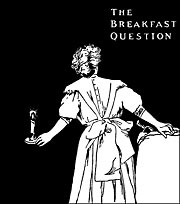








 If you're in Louisiana, the
If you're in Louisiana, the 
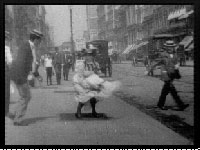
 2 hours. The manual advises, "After having mastered the form of the step, practise it at any convenient opportunity, though it is much better to have a specified hour each day. Two hours per day is little enough if the student is ambitious of excellence."
2 hours. The manual advises, "After having mastered the form of the step, practise it at any convenient opportunity, though it is much better to have a specified hour each day. Two hours per day is little enough if the student is ambitious of excellence." Open Position; Yale Position
Open Position; Yale Position 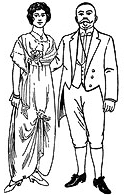

 Landau
Landau Brougham
Brougham Buggy
Buggy Rockaway
Rockaway Cabriolet
Cabriolet  Phaeton
Phaeton 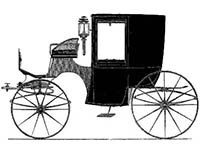


 1848
1848 1856
1856 1852
1852 1860
1860 1844
1844 1840
1840 1864
1864